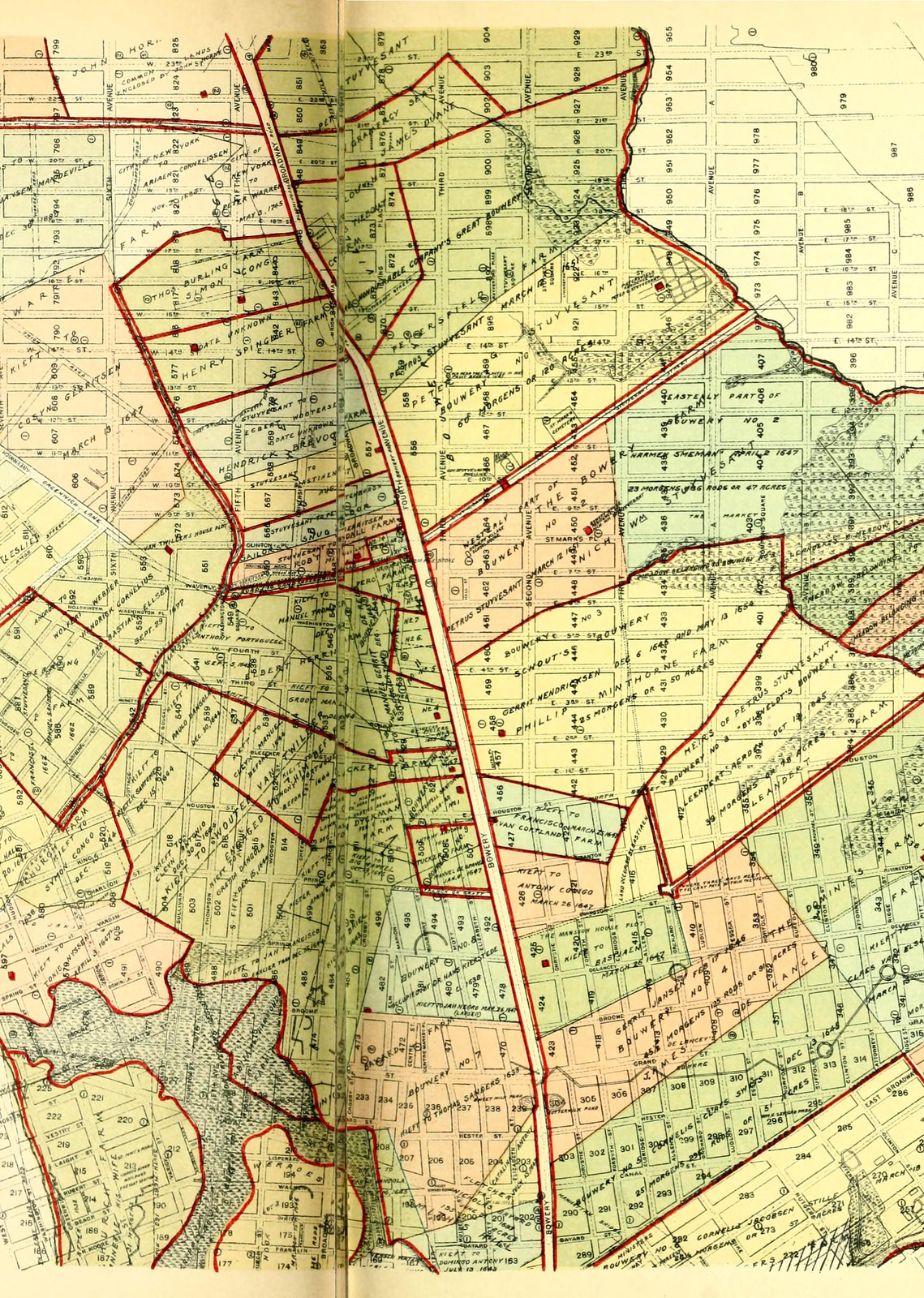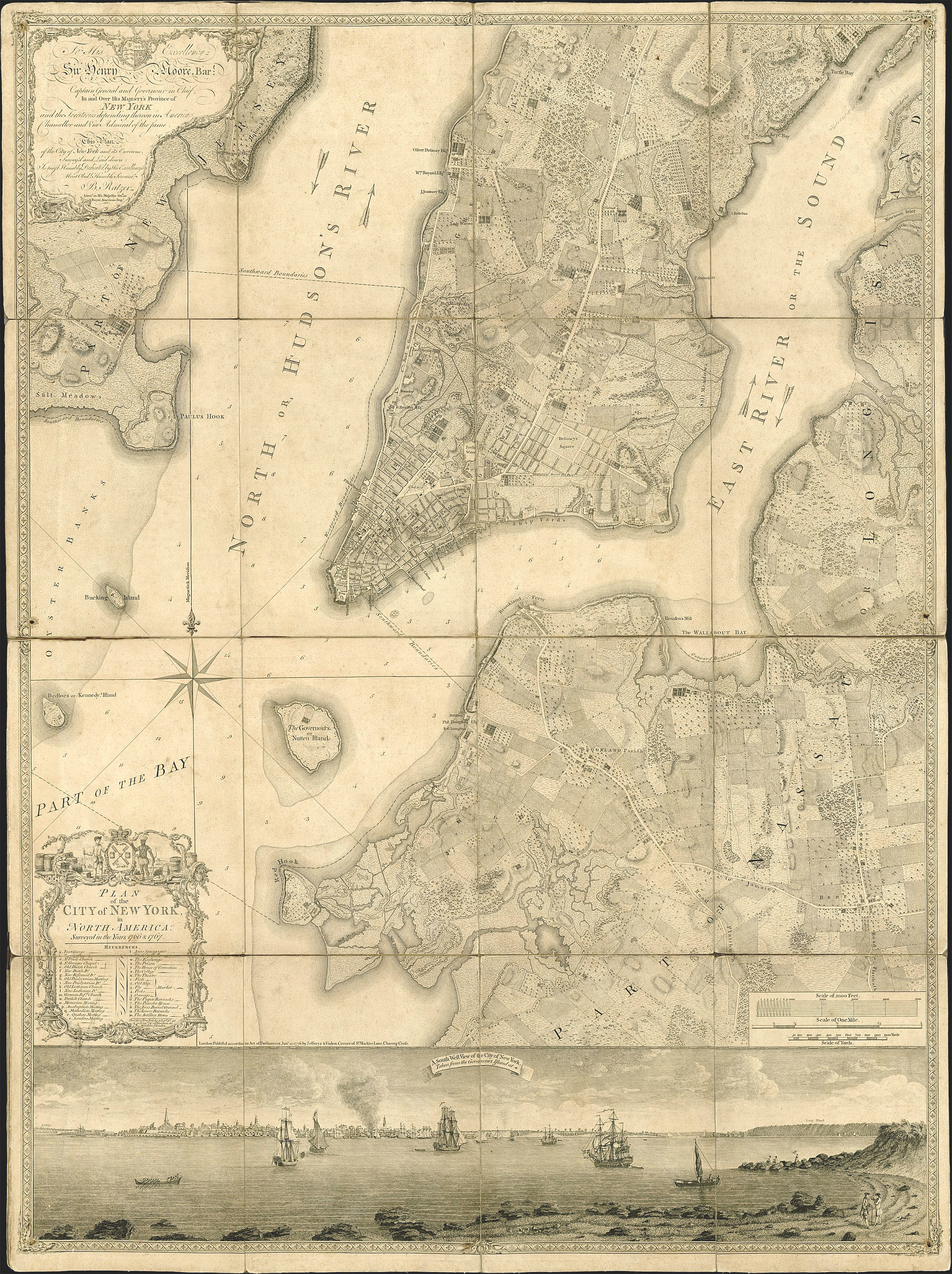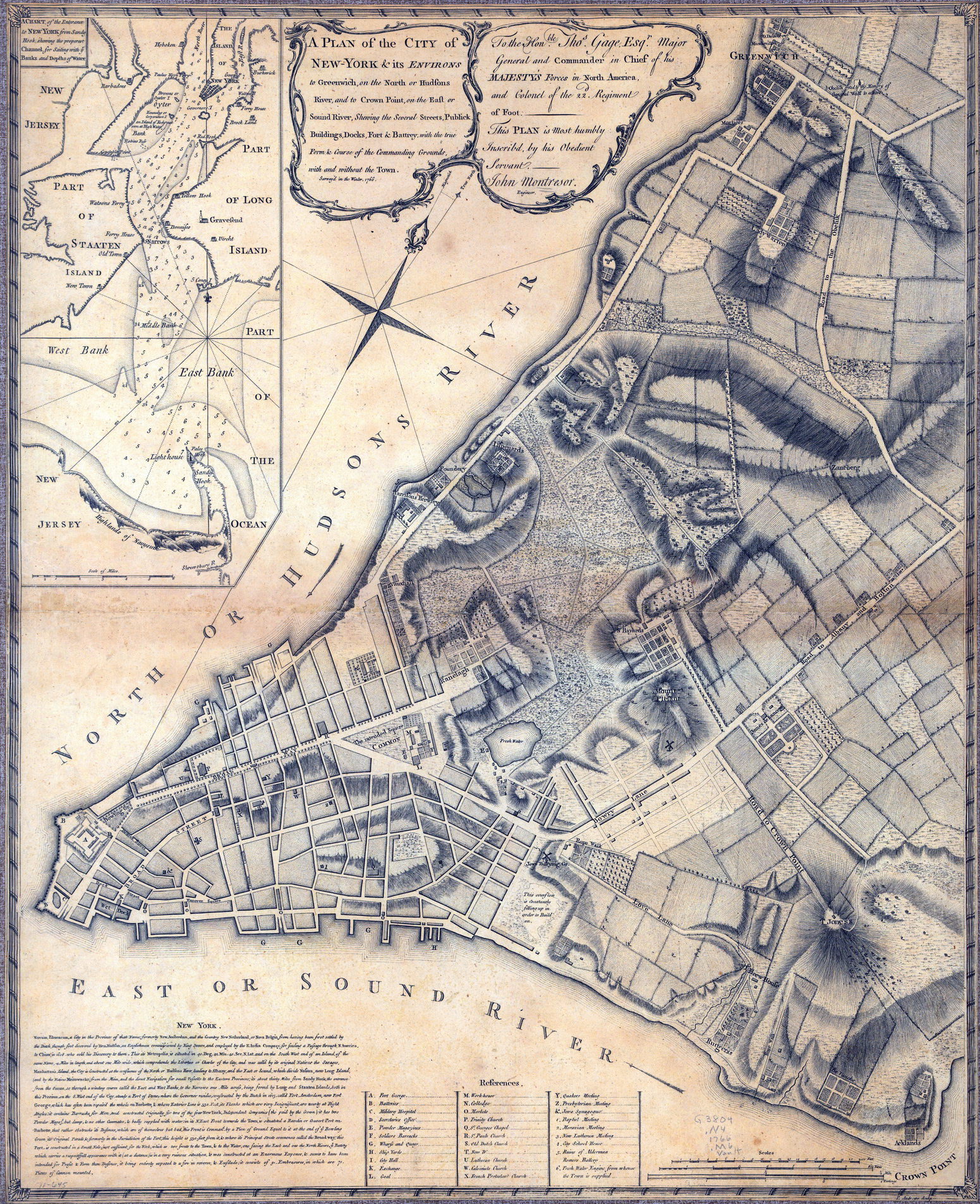New Amsterdam
The Dutch colonized the island, eventually forcing the Lenape to leave. The Dutch began bringing slaves to New Amsterdam as early as 1626.
Gezicht op Nieuw Amsterdam by Johannes Vingboons (1664), an early picture of Nieuw Amsterdam made in the year when it was conquered by the English under Richard Nicolls. Wikimedia Commons.
Greene Street

Zoom to map
I.N. Phelps Stokes, The iconography of Manhattan Island, 1498-1909:compiled from original sources and illustrated by photo-intaglio reproductions of important maps, plans, views, and documents in public and private collections, 1928.
The Dutch expected New York to be less profitable than Suriname.
Dirk Valkenburg, De suikerplantage Waterlant in Suriname - Plantage van Jonas Witsen aan de Surinamerivier - A plantation belonging to Jonas Witsen on the river Suriname
Greene Street

Zoom to map
1782 British Headquarters Topography Map, Welikia Project
Thomas Howell Greenwhich Village painting, 1768. Sanderson E.W.(2009). Mannahatta: A Natural History of New York City.New York: Abrams, 69.
Zoom to map
Plan of the City of New York in North America. Bernard Ratzer. ca 1770. Brooklyn Historical Society.
Greene Street

Zoom to map
A Plan of the City of New York & Its Environs to Greenwich on the North or Hudson River,…survey’d in the winter, 1766.. Montresor.
Greene Street

Bayard Farm Advertisement, 1790: Daily Advertiser
